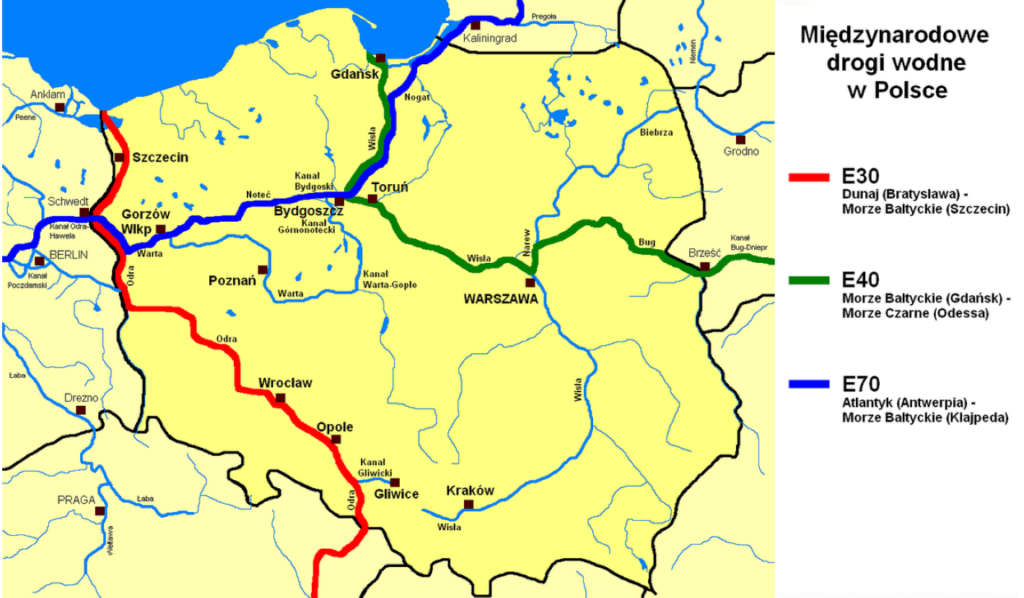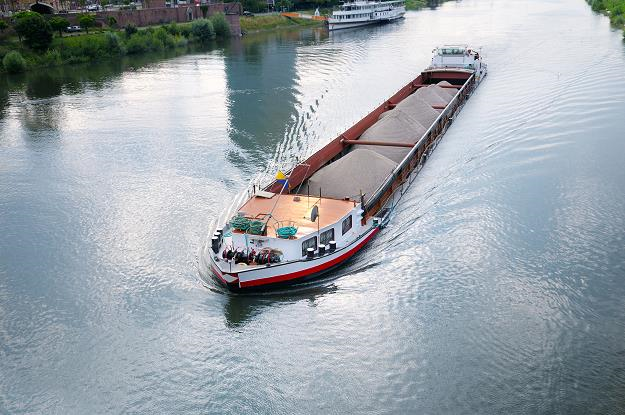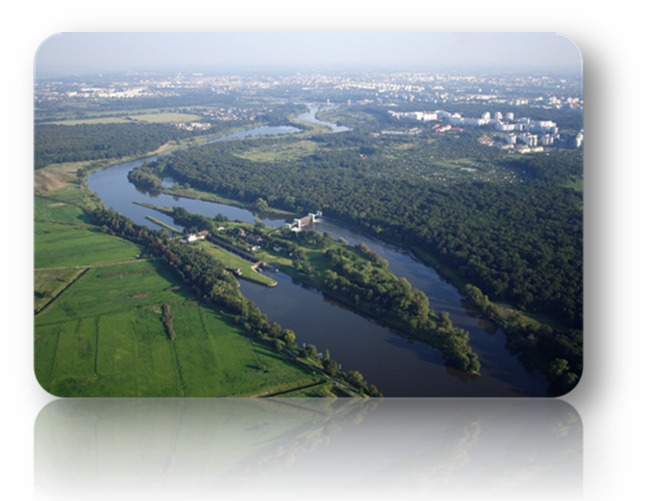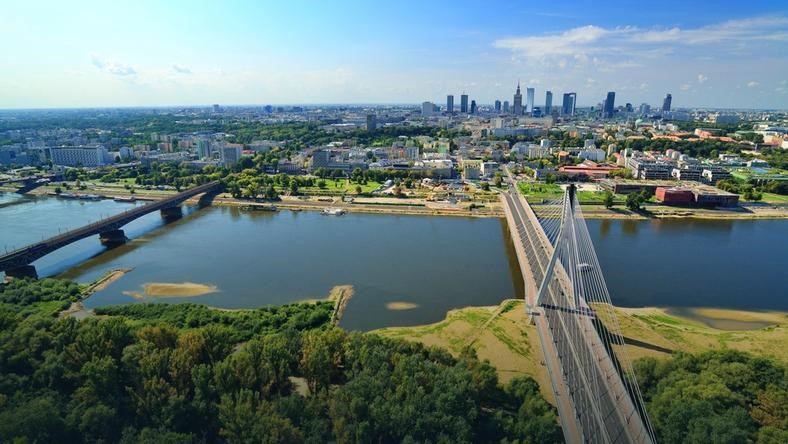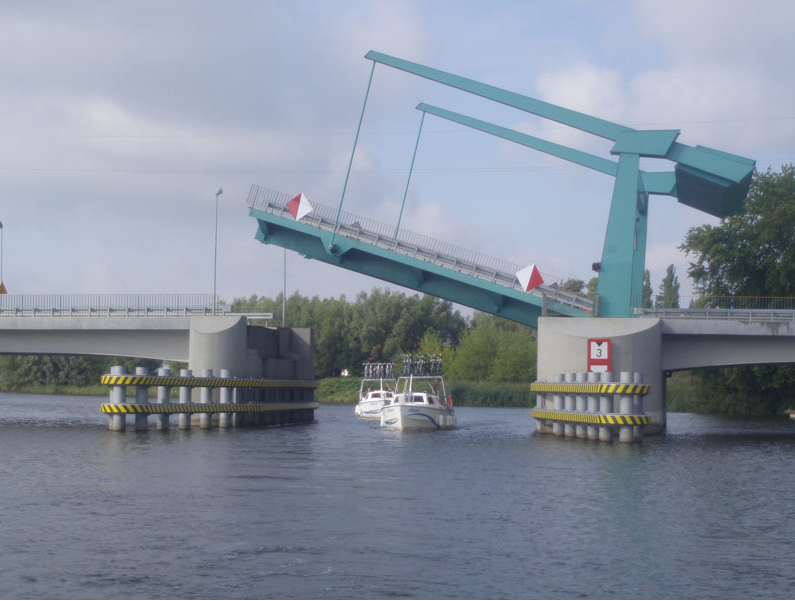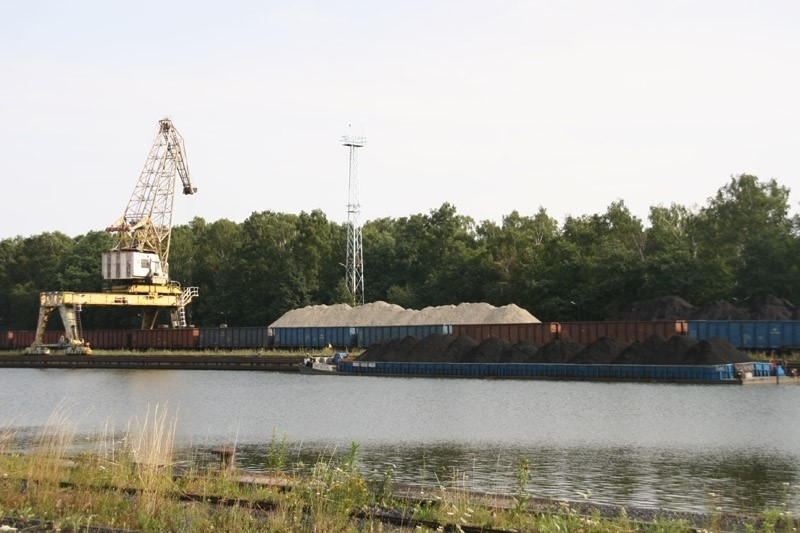Raport - Development plan of inland waterways in Poland for the years 2016 - 2020 with the prospects of up to 2030.
Part I - WATERWAYS IN POLAND
Description of the current status:
The river network in Poland is one of the best developed river networks in Europe. Nevertheless, more than 3600 km of waterways are still unused.
At the same time river transport is environmentally friendly, cheap and safe. The total external costs generated by inland waterway shipping are estimated to be 7 times lower than in the case of road transport.
Unfortunately, for more than a dozen years now, the share of the inland waterway shipping in the carriage of goods in Poland has ranged from 0.6 to 0.7%, while the European average is higher than 7%.
Poland is an area that three inland waterways of international importance run through, and one of them connects the Baltic Sea with the Black Sea by means of the Vistula River (waterway E40),
another one runs along the Odra Waterway (waterway E30),
and the third one is a part of the east-west European transport route connecting the Oder River with the Vistula Lagoon (waterway E70).
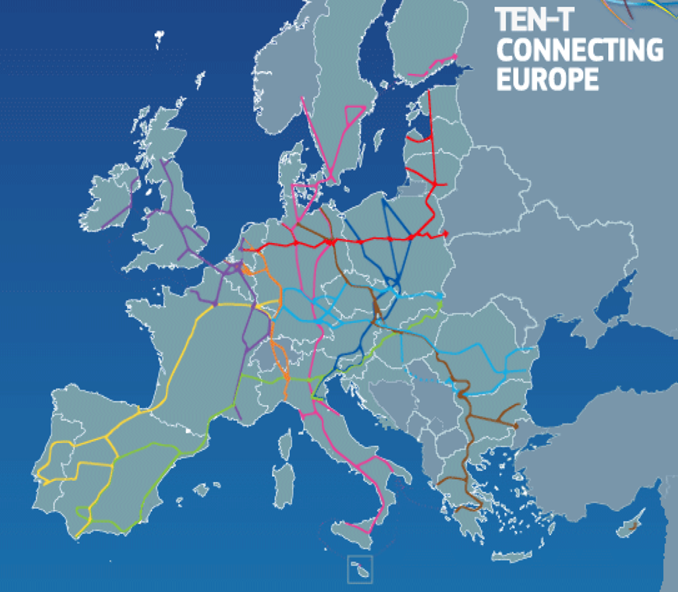 These routes have been designated under the AGN Agreement (full name: European Agreement on Main Inland Waterways of International Importance concluded in 1996 in Geneva at a meeting of the United Nations Economic Commission for Europe).
These routes have been designated under the AGN Agreement (full name: European Agreement on Main Inland Waterways of International Importance concluded in 1996 in Geneva at a meeting of the United Nations Economic Commission for Europe).
Poland, as one of the very few countries of Central and Eastern Europe, has not ratified the Agreement.
The E-40 international waterway connects the Baltic Sea with the Black Sea.
It starts in Gdańsk and further on in Poland it runs along the Vistula River and the Bug River, up to Terespol, to the Poland - Belarus border.
In its Belarussian part it runs along the Mukhavets River, the Dnieper–Bug Canal, the Pina River and the Pripyat River to the Belarus- Ukraine border.
In the Ukrainian part the E-40 waterway is formed by the Pripyat River and the Dnieper River which leads up to Kherson and the Black Sea.
It covers 14 regions, four of which are situated in Poland: the Pomeranian Voivodeship, the Kuyavian-Pomeranian Voivodeship, the Mazovian Voivodeship and the Lublin Voivodeship; two are in the Republic of Belarus: the Brest Region and the Gomel Region; and eight of them are located in the Ukraine: the Chernihiv Oblast, the Kiev Oblast, the Cherkasy Oblast, the Poltava Oblast, the Kirovohrad Oblast, the Dnipropetrovsk Oblast, the Zaporizhzhia Oblast and the Kherson Oblast.
The total area of the regions it runs through is 392 949.08 km2, and its population amounts to 28 690 834 residents.
The E 70 waterway: Rotterdam – Berlin – Kostrzyn – Bydgoszcz – Vistula Lagoon – Kaliningrad connects Western Europe through the Berlin hub of inland waterway traffic and through northern Poland with the Kaliningrad region and further on with the system of Nemunas waterway. In Poland it runs from the Oder - Havel Canal to the Hohensaaten lock along the lower reaches of the Oder River through Kostrzyn (E 30), then along the Warta waterway and the Noteć River to the Bydgoszcz Canal, along the Brda River and the lower reaches of the Vistula River (E 40) through Nogat to the Vistula Lagoon and to Kaliningrad, further on along the Pregel Rivel and Deyma River to the Klaipeda.
Pursuant to the European Agreement on Main Inland Waterways of International Importance (AGN), only waterways meeting at least the basic requirements of class IV (minimum dimensions of vessels: 80 m x 9.5 m) can be considered as international waterways.
The newly built sections should correspond to at least class Vb, whereas modernized sections should correspond to at least class Va.
In Western Europe most of the E 70 International Waterway meets the AGN agreement’s requirements.
However, unfortunately, the E 70 International Waterway in Poland does not meet the AGN agreement’s requirements on any of its sections.
At present the E 70 International Waterway may be considered as class II, apart from the section of the Noteć River from the estuary of the Drawa River to the connection with the Bydgoszcz Canal where only the parameters of class Ib have been fulfilled.
E70 is canalized by means of 28 barrages, one of which - the Czersko Polskie lock in Bydgoszcz - is a new barrage handed over for use in 1999.
The other 27 locks are mainly non-electrified structures built at the turn of the 19th and 20th centuries. The width of the waterway ranges from 16 m to 25 m, minimum curve radiuses are 200 m - 250 m, and the minimum clearances under bridges vary from 3.5 m to 4 m. Guaranteed depth of this route is 1.2 m-1.5 m and the speed limit of ships is 8 km/h.
Majority of the modernization of the E 70 waterway missing sections in Western European countries has already been started and in the case of the other ones, the precise starting date of their modernization has been specified. Modernization of the E 70 waterway in Poland is only at the stage of the investment planning and preparation.
Waterway marked E-30 runs from Stockholm, along the Swidish eastern coastal waters, across the Baltic Sea to Swinoujscie, along the Oder River, along the planned Danube–Oder Canal to Devin near Bratislava, connecting the Baltic Sea with the Danube. The elements of this waterway are the Szczecin Lagoon, the Oder Waterway and the Danube–Oder Canal.
The E-30 waterway runs along the so called Central European Transport Corridor (CETC). The initiative aimed at, among others, the restoration of water shipping on the Oder and the construction of a canal linking the Danube with the Oder was signed on 6 April 2004. The aim of the project is active work in order to create a corridor linking Northern Europe with Southern Europe through the following regions: Scania in Sweden, Polish voivodeships: West Pomeranian Voivodeship, Lubuskie Voivodeship and Lower Silesia Voivodeship, the region of Hradec Kralove in the Czech Republic and Bratislava in Slovakia.
The Oder River is an important waterway linking the basins of Western Europe with river basins in Eastern Europe. Other waterways have a direct connection to the Oder River:
– The Gliwice Canal at the 98.3 km of the Oder,
– The Kędzierzyn Koźle Canal which is a part of the Danube–Oder Canal at the 9.3 km of the Gliwice Canal,
- The Navigation Canal which starts at the 244.2 km and finishes at the 255.8 km of the Oder,
- The Miejski Canal which starts at the 250.1 km and finishes at the 255.8 km of the Oder,
– The Oder-Spree Canal at the 553.4 km of the Oder,
– The Friedrich Wilhelm Canal at the 576.8 km of the Oder,
– The Oder-Vistula Waterway with the Bydgoszcz Canal at the 617.6 km of the Oder,
– The Wrieceńska Old Oder Waterway; starts at the 644.9 km and finishes at the 664.9 km of the Oder.
At the 664.9 km of the Oder River it is joined by:
– The Freienwalde Canal,
– The Oder - Havel Canal,
– The Hohensaaten-Friedrichsthal Canal,
– The Finow Canal.
PATR II - AIMED AT THE DEVELOPMENT AND MODERNIZATION OF WATERWAYS IN POLAND FOR THE YEARS 2016 - 2020
In Poland goods are carried mainly by roads (86%) and rail (12.5%). Waterway shipping constitutes as little as 0.4 %.
The commitments resulting from the so-called European Union White Papers assume that, by 2030, 30% of road freight transport on distances greater than 300 km should be shifted to other modes of transport, e.g. water or rail transport, whereas by 2050, this should constitute more than 50% of this type of transport. The above also refers to Poland.
THEREFORE, IN JUNE 2016 THE POLISH GOVERNMENT DECIDED AS FOLLOWS:
- Polish inland waterways as well as rivers and canals - which are important from the transport point of view - shall meet the requirements of class IV international navigability level.
- By the year 2030 the Oder River (on its entire length) and the Vistula River (from Warsaw to Gdańsk) shall become international shipping routes.
- Most of all, Poland is going to become a party to the European Agreement on Main Inland Waterways of International Importance (AGN). Polish waterways are to become shipping routes considered to be significant to the integration of the European waterway networks, i.e. of ‘E’ category. The AGN Agreement will concern the ways which already meet the relevant classification requirements as well as the routes that will meet the international standards in the future. In order for the Polish inland waterways of E category to meet the shipping routes’ requirements of international significance, they must be developed or upgraded to the level of class IV international navigability.
- The objective, i.e. construction or upgrading of international inland waterways to meet the parameters of class IV navigability has been divided into the following priorities:
A. The Oder Waterway (E-30) – obtaining the international navigability class and its inclusion into the European waterway network;
B. The Vistula Waterway (E-30) – improvement of the navigation conditions;
C. The Oder - the Vistula - the Vistula Lagoon and Warsaw - Brześć – development of E 40 and E 70 waterways;
D. The investments to be implemented in the short term (by 2020), which will include:
- removal of the so called bottlenecks by means of upgrading of the waterways’ hydro-technical infrastructure in order to restore the long-distance shipping as soon as possible, especially on a free-flowing middle section of the Oder;
- preparation of feasibility studies for all the investments to be implemented in the long-term (the documents will refer to greater sections of shipping routes and they will recommend options of the best solutions);
- coming up with the best ways of financing (including obtaining funds from the European Fund for Strategic Investment, the so-called Juncker Fund, the UN, other);
- change in the system of water management on the Oder River basin reservoirs in order to optimally use their capacities to supply power;
And most of all:
- construction of 12 new anti-flood polders,
- works in the inner and outer port in Gdańsk,
- starting construction of barrages on the Oder - below Malczyce in Lubiąż and Ścinawa,
- and on the Vistula River - below Włocławek,
- Vernovice – Gorzyczki Logistic Centre within the “Silk Route” - with a Chinese Partner.
The investments to be implemented in the long term (by 2030), which will include:
- adaptation of the Odra Waterway to the class Va parameters, with the construction of the Polish section of the Oder-Danube connection and the construction of the Silesian Canal;
- starting the construction of the Vistula cascade - from Warsaw to Gdańsk;
- modernization of E-40 and E-70 other shipping routes;
- modernization of the upper canalized section of the Vistula River and ensuring it meets the parameters of class Va waterway, as well as construction of barrages in Niepołomice and Podwale;
- implementation of the River Information Services (RIS) for all waterways of international significance.
Part III - THE INVESTMENT BUDGETS AND IMPLEMENTATION FORMULAS
- These investments will be financed from the national and European sources - the main source of funding for the program will be the EU funds from the 2016-2020 financial perspective, the European Bank for Reconstruction and Development, the European Investment Bank, and the European Fund for Strategic Investment (the so called Juncker Plan).
- The tenders for these investments will be carried out in the EPC mode.
- They will be public tenders - announced by the National and Regional Councils of Water Management and the Ministry of Maritime and Inland Shipping (MGMiŻŚ).
- The Initially estimated budgets for the construction and modernization of inland waterways, in order to adapt them to the standards of the international shipping routes, will be as follows:
A. The Oder Waterway:
- PLN 2.9 billion by 2020;
- PLN 27.8 billion over the years 2021-2030, i.e. a total of PLN 30.7 billion;
B. The Vistula cascade along the section from Warsaw to Gdańsk:
- PLN 3.5 billion by 2020;
- PLN 28 billion over the years 2021-2030, i.e. a total of PLN 31.5 billion;
C. The Oder - Vistula connection:
- PLN 2.5 billion by 2020;
- PLN 4 billion over the years 2021-2030, i.e. a total of PLN 6.5 billion;
D.The Vistula -Brześć connection: over the years 2021-2030 PLN 8.1 billion.
5. This means that the average annual budget for the modernization of the Oder and construction of the Vistula cascade (from Warsaw to Gdansk) will amount to:
- over the years 2017- 2020 – approx. PLN 3 billion a year.
- over the years 2021 - 2030 – approx. PLN 6 billion a year.
(06.07.2016 - Current exchange rate: PLN 1 = USD 0.26).
Other - additional forms of the investments’ implementation- are also considered - e.g.:
- by obtaining additional financing for UN world projects,
- by negotiations with potential general Contractors (e.g. Companies from China) PPP - Project Finance – Build Operate (Maintain) and other instruments model.

